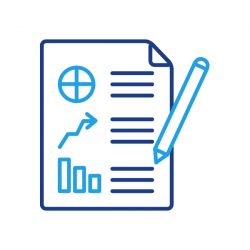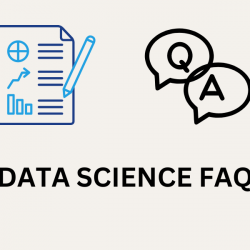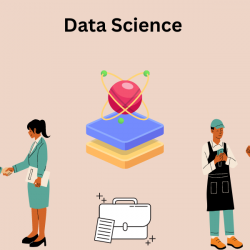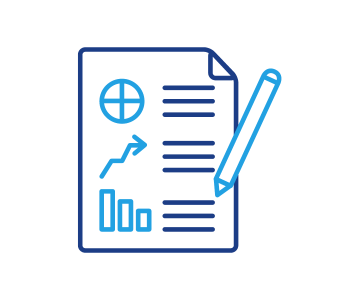Data Science vs. Statistics: What’s the Difference?


Data Science vs. Statistics What’s the Difference
Introduction
Are you having trouble determining the difference between data science and statistics? It’s a common problem. Both data science and statistics are used to analyze and interpret large amounts of data in order to answer questions and draw conclusions, making it difficult for an onlooker to tell them apart.
At first glance, data science and statistics appear to be quite similar. But there are important differences between the two fields that can help you understand when to use each.
Data Science is an interdisciplinary field that uses scientific methods, processes, algorithms, and systems to extract knowledge or insights from structured and unstructured data. Data Scientists use data mining, machine learning, reproduction algorithms, artificial intelligence (AI), statistical modeling, visual analytics, predictive analytics, natural language processing (NLP), computer vision (CV), as well as other advanced tools to gain insights from vast amounts of data.
On the other hand, Statistics is a branch of mathematics used for collecting, analyzing and interpreting numerical or qualitative data from which significant trends can be determined. Statisticians apply a wide range of mathematical methods including hypothesis testing, regression analysis as well as sampling techniques. They also utilize backend programming languages such as R and Python for statistical calculations.
In terms of their core similarities both Data Science & Statistics utilize quantitative information for developing insights but whileStatistics focuses on summarizing the collected data & pinpointing relationships within it; Data Science focuses on discoveries & actionable solutions using state of the art methods & tools such as Artificial Intelligence (AI) & Machine Learning (ML). Data Science Course in Delhi
Overview of Data Science
Data Science is an interdisciplinary field that combines mathematics, statistics, computing, and domain expertise to extract knowledge from data. Data Scientists explore and analyze large data sets to uncover trends and find patterns in the data. They often use advanced software tools such as machine learning or artificial intelligence algorithms to uncover insights from the data.
Statistics on the other hand focuses more on techniques for collecting, organizing, summarizing, presenting and interpreting data sets. Statisticians often use probability based models to explain observed phenomena in datasets. They also test hypotheses about how certain factors affect the results of experiments or surveys.
Data Science encompasses a broader range of skills than statistics alone and requires more sophisticated technology tools to process larger datasets. In addition, Data Scientists must have a deep understanding of the domain they’re researching in order to interpret findings accurately and communicate them effectively to stakeholders. By contrast, Statisticians tend to have a narrower focus since they usually work with smaller datasets that don’t require heavy computations or complex analyses.
The decision about which field is best for you depends on many factors including the type of data you need to analyze, the size of your dataset, and your career goals. If you’re looking for an exciting career focused on exploring large datasets with specialized software tools, then Data Science may be right for you. On the other hand, if you’re more interested in analyzing smaller datasets or exploring hypotheses then Statistics may be a better fit for your needs.
Role of Statistics in Data Science
Data Scientists use Statistics to build predictive models and understand data patterns from large datasets. The use of statistics in this way helps to provide interpretability and insights into data models. Data Scientists also use more advanced statistical techniques such as linear regression, classification algorithms, and Monte Carlo simulations to analyze data further.
The role of Statistics in Data Science is vital. Without its analytical capabilities, it would be difficult for Data Scientists to gain insight from complex datasets and make predictions about future outcomes. By using predictive models built on statistical techniques, Data Scientists can identify patterns in data for further analysis, which in turn helps them make more informed decisions about how best to utilize their datasets.
Overall, there can be no doubt that the role of Statistics in Data Science is an important one. By understanding the differences between these two fields and how they interact with one another, companies can unlock greater insight from their data and make smarter decisions based on their findings. Data Analyst Course in Delhi
Techniques Used in Data Science and Statistics
Data cleaning & manipulation is an essential process for both data science and statistics. This involves taking raw data and transforming it into a usable form for further analysis. Data cleansing involves removing or replacing inaccurate or missing values to ensure accuracy, whereas manipulation allows you to reshape the structure of your data and prepare it for analysis.
Exploratory Data Analysis (EDA) is a key component of both disciplines; EDA helps users understand their datasets by identifying patterns, trends, and relationships between variables. Through descriptive statistics such as measures of central tendency (mean, median, mode), dispersion (standard deviation) as well as graphical representations like bar charts or box plots, an analyst can gain valuable insight into their dataset.
Predictive modeling is an approach used by data scientists to build models which can predict future outcomes based on past observations. Predictive models can be built using various machine learning algorithms such as Linear Regression, Decision Trees, Random Forests etc., depending on the nature of the problem at hand. Using predictive models can help organizations create more targeted interventions or products based on customer behavior patterns. Data Science Institute in Delhi
Applications of Data Science and Statistics
On the other hand, statistics is a branch of mathematics that focuses on exploring data sets in search of general patterns and relationships between variables. Statisticians review and analyze collected data according to statistical principles in order to draw valid conclusions about the population under study. They use various techniques such as probability theory, hypothesis testing, regression analysis, and ANOVA (analysis of variance) to test hypotheses about the population under study or make predictions about future events based on past observations.
The applications for both data science and statistics are seemingly endless. Data science can be used for marketing campaigns or customer segmentation; it’s also used heavily in web analytics for optimizing user experience or identifying other optimization opportunities. Statistics is commonly applied in research studies, policy development decision making or financial forecasting. To this end, both fields play an important role in helping organizations make informed decisions based on a thorough analysis of their available data assets.
Advantages/Disadvantages of Each Discipline
Data Science, which comes from the field of computer science, takes a predictive approach when examining data sets. It uses complex algorithms and machine learning techniques to identify patterns among large quantities of data in order to predict future outcomes and behaviors. With this approach, businesses can gain valuable insights into customer behavior or market trends that can be used to inform decisions regarding product development or marketing strategies. The major advantage of this approach is its ability to uncover hidden relationships within large volumes of information.
On the other hand, Statistics is a more traditional method for studying data sets using mathematical models and statistical analysis techniques. This discipline focuses on investigating cause and effect relationships among various variables and understanding how these results could be used for decision making purposes in areas such as research or political science. Statistics is also useful for testing hypotheses by validating assumptions with actual data. The advantage here is that it provides reliable evidence on which decisions can be made with confidence.
To summarize, Data Science has its own unique set of advantages such as being able to uncover hidden patterns from large datasets while Statistics allows users to test assumptions through mathematical models and statistical analysis techniques so that decisions can be made with confidence backed by reliable evidence. Hopefully this comparison helped you understand the difference between Data Science and Statistics a bit better.
Understanding the Difference Between Data Science and Statistics
Data science is a broad field that encompasses various tools, techniques, and processes used to extract insights from unstructured or structured data. It deals with data in every aspect — from collection to cleaning and analysis. By applying various mathematical models and algorithms, data scientists can discover patterns in data sets. This helps them build predictive models or support decisions with evidence based predictions.
Statistics, on the other hand, is a branch of mathematics that deals with collecting, organizing, analyzing, interpreting, and presenting numerical information. It enables us to infer conclusions about given populations from the sample of population under study. Statisticians use various methods such as hypothesis testing and regression analysis to make predictions from data sets.
In short, data science combines both statistical modeling with machine learning to collect structured or unstructured data sets to answer questions about trends in given populations while statistics draws inferences based upon previously collected or sampled data typically in a real world scenario such as medical research or survey design.
By understanding the difference between these two fields of study before tackling any problem solving challenges based on big datasets can give you an edge over competitors who do not understand this concept thoroughly. At its core, understanding the distinction between statistics and data science will help you make better decisions while working on complex datasets that require both thinking skill sets.
Concluding Thoughts on the Differences between Data Science and Statistics
Data science is a very broad field that deals with large amounts of structured and unstructured data, using various tools and techniques to gain insights into trends and predictions. Data scientists must understand both the business context in which they are working and the technical languages used for analysis. Data science involves several skills such as machine learning, predictive analytics, visualization and communication, all used towards deriving valuable insights from big datasets.
On the other hand, statistics is more focused on the analysis of numerical data. This involves using mathematical models to provide an evidence based approach to decision making. This requires knowledge in areas such as probability theory, linear algebra, design of experiments, statistical computing software and applied econometrics. While these skills can also be useful for a data scientist when dealing with small datasets or complex problems that require sophisticated statistical models, they are not necessary for day to day work related to larger datasets where simpler statistical techniques will suffice.
In conclusion, while there are similarities between the two disciplines of data science and statistics due to their overlap in terms of skill set and analysis techniques utilized, they have distinct goals overall: one being more focused on gaining meaningful insights from large datasets while the other is mainly concerned with hypothesis testing using sophisticated mathematics models. Ultimately both disciplines are essential when it comes to making informed decisions about businesses or organizations based on evidence from reliable data sources.






Ingen kommentarer endnu